At home with Barnaba Fornasetti
Barnaba Fornasetti invites us into Casa Fornasetti, a private residence and creative hub, as he carries on its founder’s perpetual exploration of creativity and design
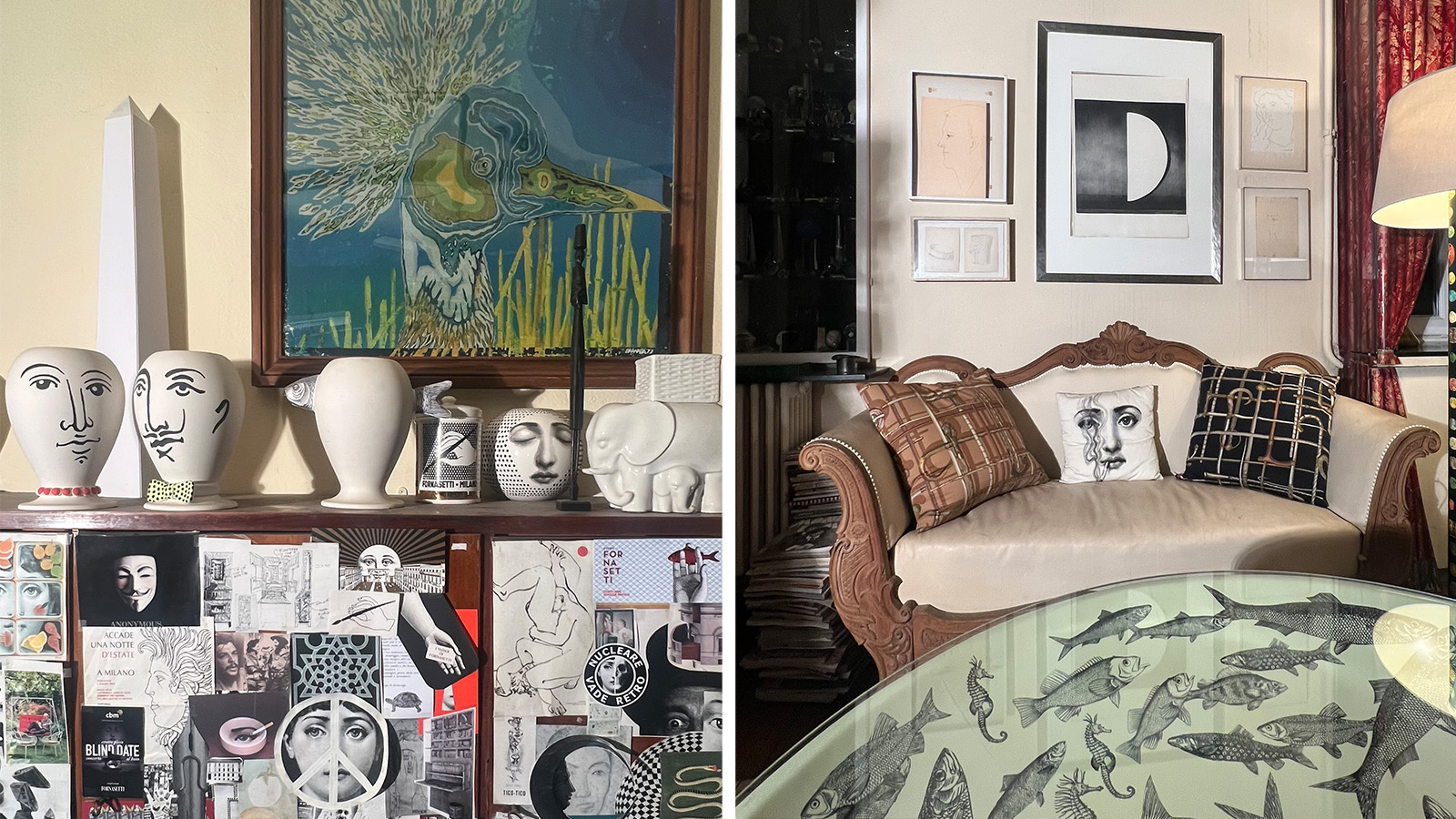
For over half a century, Fornasetti - founded in 1940 by Piero Fornasetti - has embodied artistic brilliance, seamlessly fusing a distinct style with boundless creativity. Gracing furniture, plates, candles, and carpets, the unmistakable Fornasetti style is a bold and visionary expression unique and recognisable (but also unmissable and inimitable), characterised by a decorative essence that eschews frivolity, maintaining a consistent and distinctive aesthetic, and a great deal of irony.
‘Imagination, fantasy, and creativity are perpetual sources of nourishment for the soul and spirit. It is a responsibility for those endowed with these gifts to share them generously,’ said Fornasetti, whose legacy is now carried on by his son Barnaba, now at the helm of the company.
The brand's philosophy, centred on merging functionality with artistic flair, finds embodiment in Casa Fornasetti, the historic 19th century home in Milan's Città Studi quarter. It’s a location the international design community knows well, thanks to its legendary party held every year during Salone del Mobile that marks the end of the week-long design celebrations in the city.
Originally a family abode, it was transformed into an artistic sanctuary under Piero Fornasetti's influence. Today, under the direction of Barnaba, it serves as both a private residence and the hub of Fornasetti's creative endeavours. Barnaba's touch has turned it into a true manifesto of Fornasetti aesthetics – and his own. Preserving memory is paramount for Barnaba, something that is evident in the meticulously curated archive, housing 13,000 drawings and objects. Casa Fornasetti, with its whimsical allure, stands as a living testament to this original Italian story, and carries on its founder’s perpetual exploration of creativity and design.
Step inside the creative mind of Barnaba Fornasetti
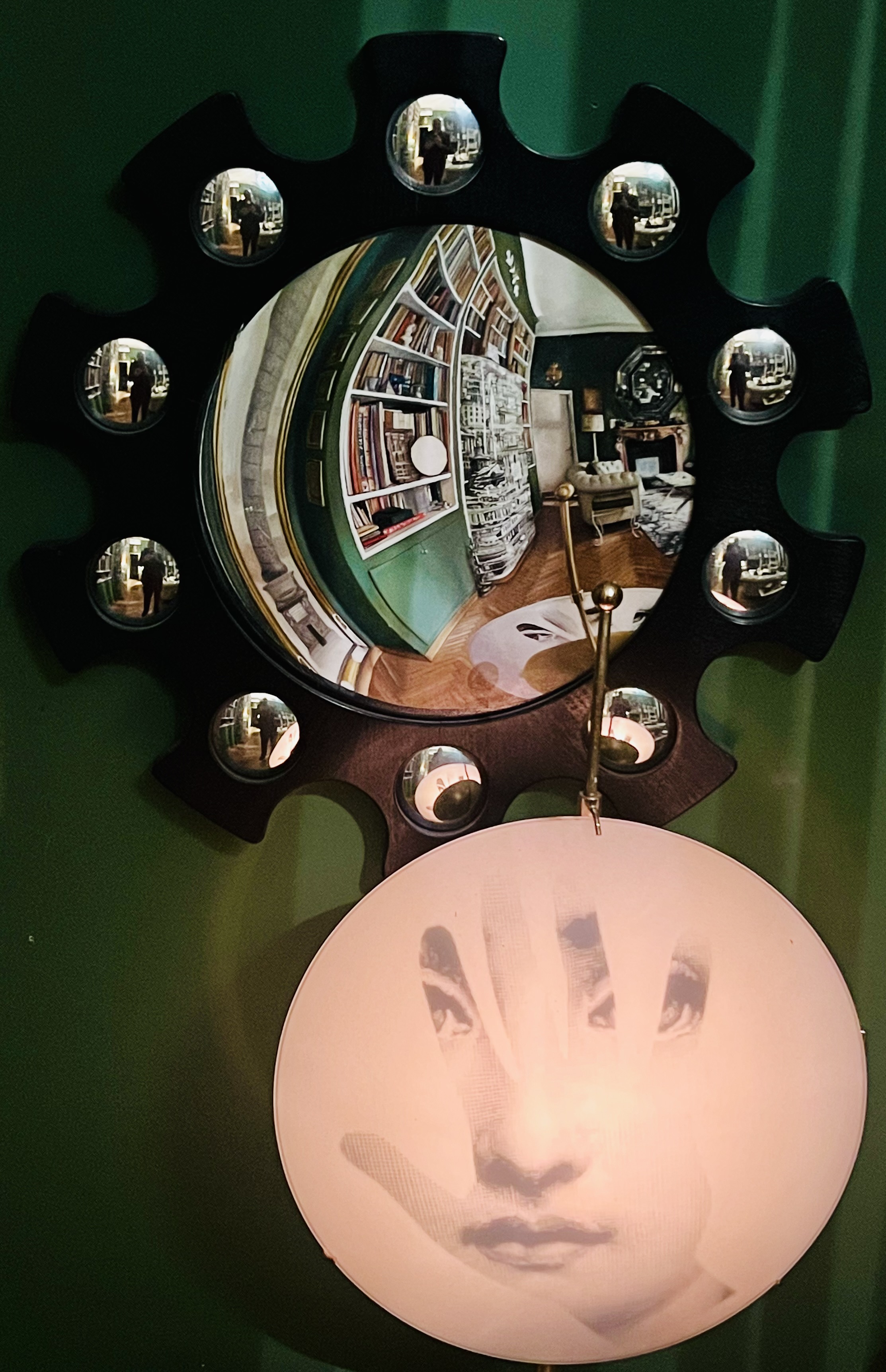
The green living room, a detail featuring the Fornasetti mirror “Van Eyck”. Instead of the central mirror there’s a miniature painting by Stefania Fersini, made in 2016, representing the reflection of this room
Wallpaper*: Can you tell us about your home?
Barnaba Fornasetti: Over the years, through all its changes, it has become the manifesto par excellence of the Fornasetti aesthetics, its imaginative capacity and creativity. The house where I live represents more than a century of real, social, familial and creative life. It is a daily memory, without nostalgia, which brings me the joy of doing what you see today, represented by the Fornasetti brand.
W*: Where is your favourite place at home?
Wallpaper* Newsletter
Receive our daily digest of inspiration, escapism and design stories from around the world direct to your inbox.
BF: I love all the rooms. Which one I’m using most depends on my mood or my state of mind, the weather, the light, whether I’m eating or listening to music or reading or working.
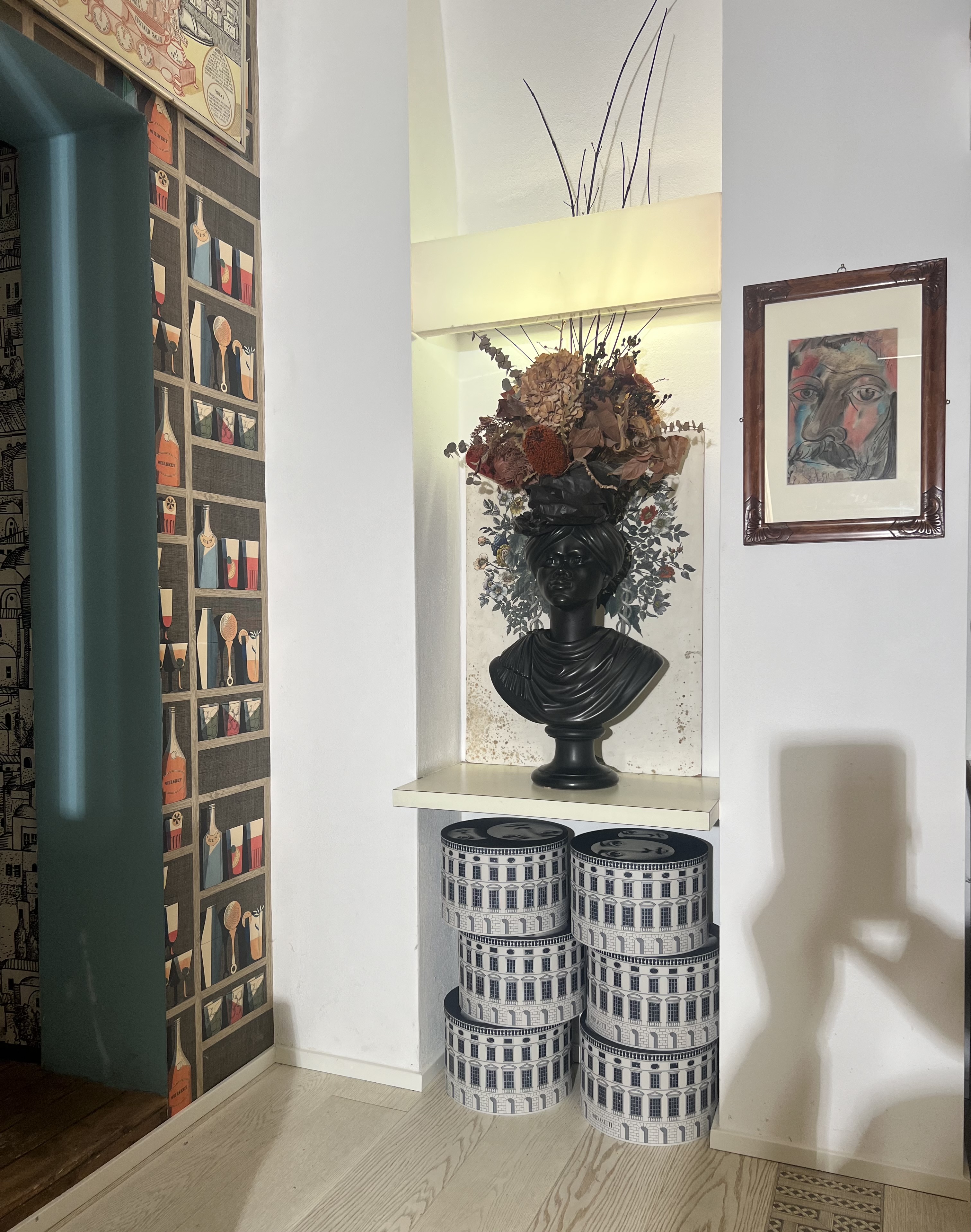
On the wall, Fornasetti wallpaper “Cocktail” by Cole and Son. On the shelf, the “Moro” vase by Piero Fornasetti. Under the Moro vase, some boxes containing the Fornasetti panettone
W*: Describe your neighbourhood/area.
BF: Città Studi is an interesting neighbourhood because it developed according to an urban plan of a University city, following a design that I would define as service-oriented and on a human scale. And that is still quite intact. It’s still possible to read the urban plan linked to the various university faculties. In other areas of town, it’s rare to find a neighbourhood well preserved in its original plan.
W*: If Wallpaper* came for dinner, what would you cook us?
BF: I’m not so good at cooking, but my guests say my “risotto alla milanese” is excellent. I cook other variations on this theme. I have a friend, Hugh Findletar, a Jamaican who cooks very well and often works with me. He creates glass pieces in collaboration with Murano glass-blowers and perhaps there’s a relation with cooking and glass firing.
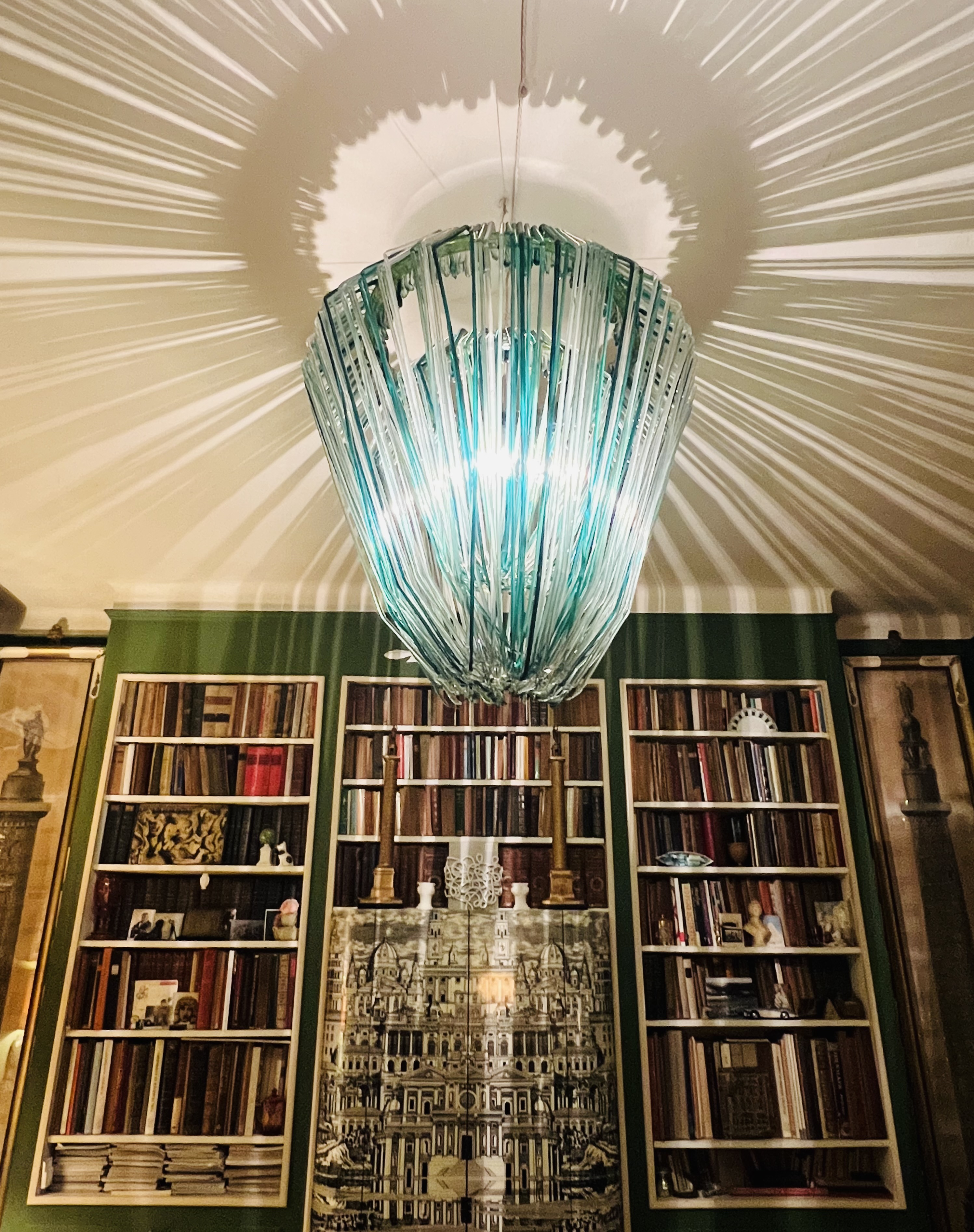
The green living room. The chandelier is a creation by Jacopo Foggini. Fornasetti custom-made wardrobe “Città che si rispecchia” and a big bookshelf all around it.
W*: What’s your favourite indulgence and why? When did you last indulge?
BF: My indulgence is to change the small installations I make around the home. This allows me to develop my creativity. My home is a place where the eye can imagine surreal worlds, even if my messy garden is where my brain indulges more. The garden is a large canvas where you can play with the colours of nature and learn slowness. It takes time to see the ideas you create come to life.
W*: What is your favourite place, anywhere in the world? And why?
BF: I love the sea since I love swimming, especially in Greece where it’s still possible to find islands with few people and deserted beaches reachable only by sea. I believe that true luxury is a beach without people where you can only hear the sound of the sea.
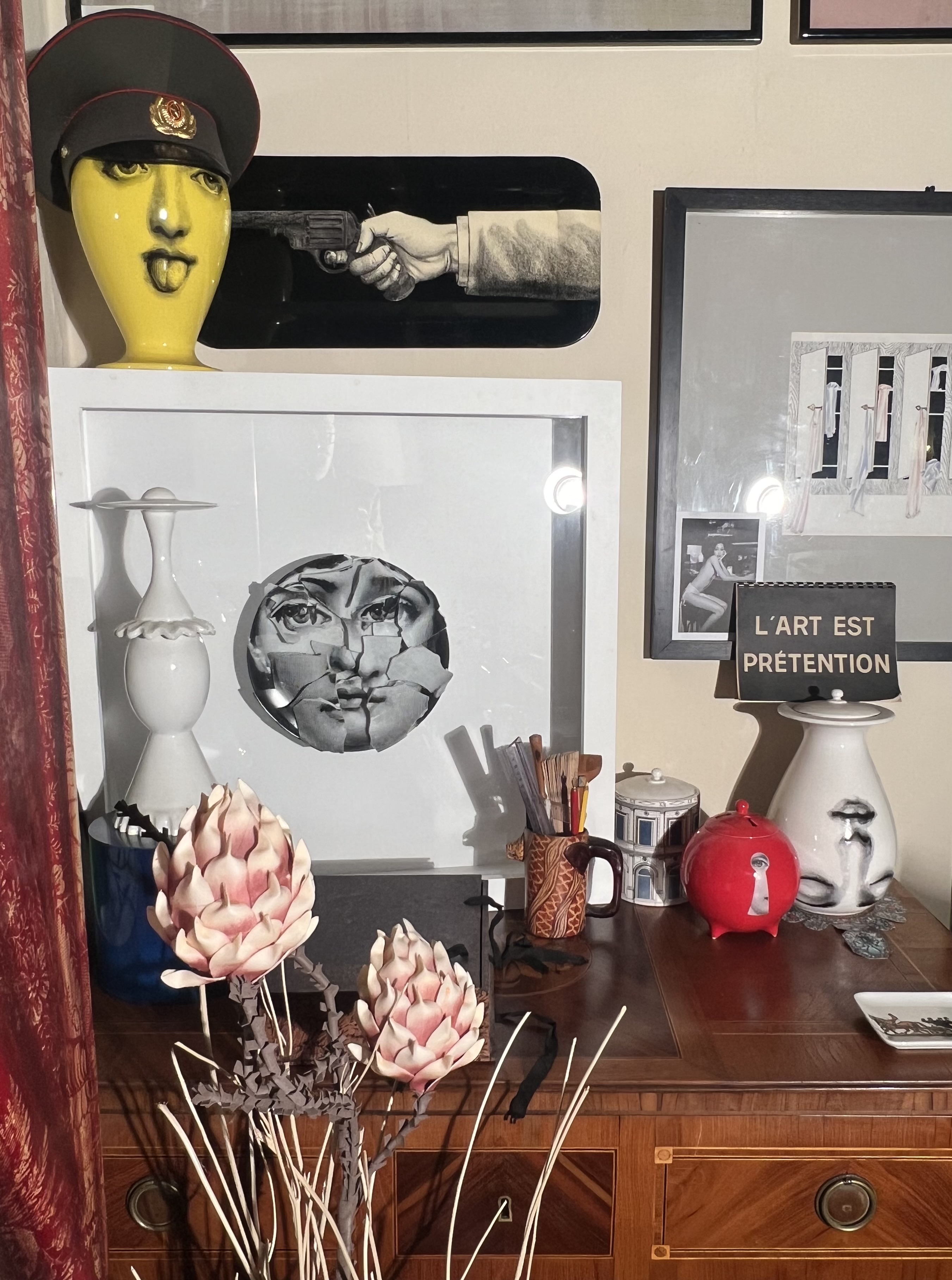
A corner of Barnaba Fornasetti’s studio with some Fornasetti works. Amongst them some vases, a tray and an oeuvre by the artist Carlo Dell’Acqua who has broken up and re-assembled the fragments of a Fornasetti plate from the series “Tema e Variazioni”. On its letft a Gio Ponti ceramic.
W* What do you collect?
BF: I have been collecting records since I was a child. And many small objects too, not necessarily of value. But often it’s so difficult to dust them all that you end up collecting various types of mites.
W*: What’s the last thing you bought?
BF: Second hand records of various musical genres, but the most important thing is a gift for the woman I love.
W*: Is there an item at home that you particularly treasure?
BF: A wall lamp made of real shells made in the late ‘50s. I helped my mother threading shells and I remember how many arguments I had with my father while she was threading hundreds of small shells.
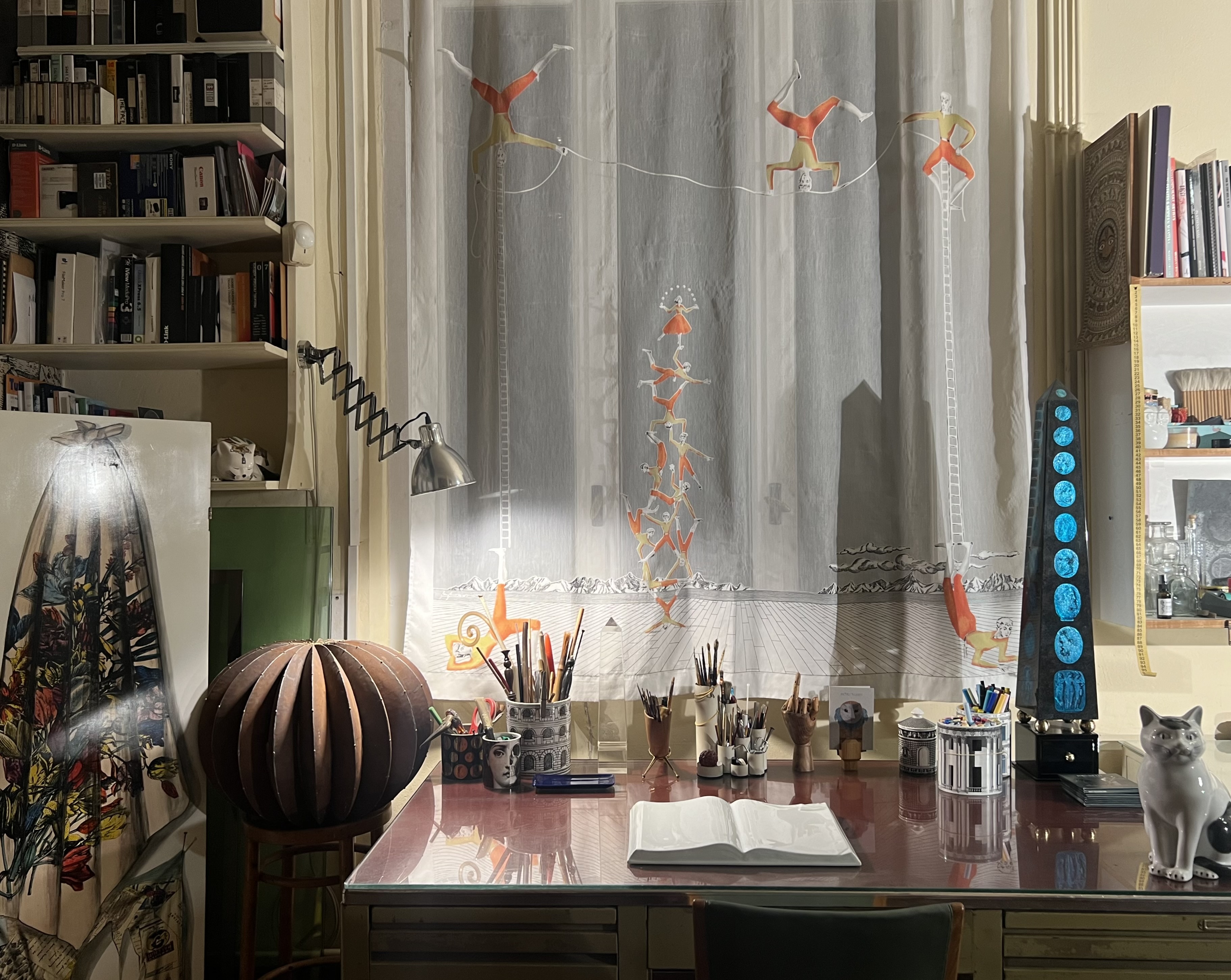
The window of the studio with Fornasetti curtain “Acrobati”. An obelisk “Cammei” by Barnaba Fornasetti and a Piero Fornasetti ceramic cat placed on the Gio Ponti desk. On the left corner the screen “Foulards” by Piero Fornasetti.
W*: The last object/item you lost? Will you replace it?
BF: I have lost my wallet with documents and credit cards more than once. Sometimes they give it back to me, but only once with money, which I gave to the kind lady who found it.
W*: What’s inspiring you right now?
BF: First of all, the biggest inspiration I have ever had comes from my father’s archive. This is the source of inspiration par excellence. In this archive you can find thousands of images and not only Fornasetti images but from everywhere and everyone. My father used to say “…I don’t limit myself and nothing is too esoteric to be used as inspiration. I want to free my inspiration from the limitations of the usual….”
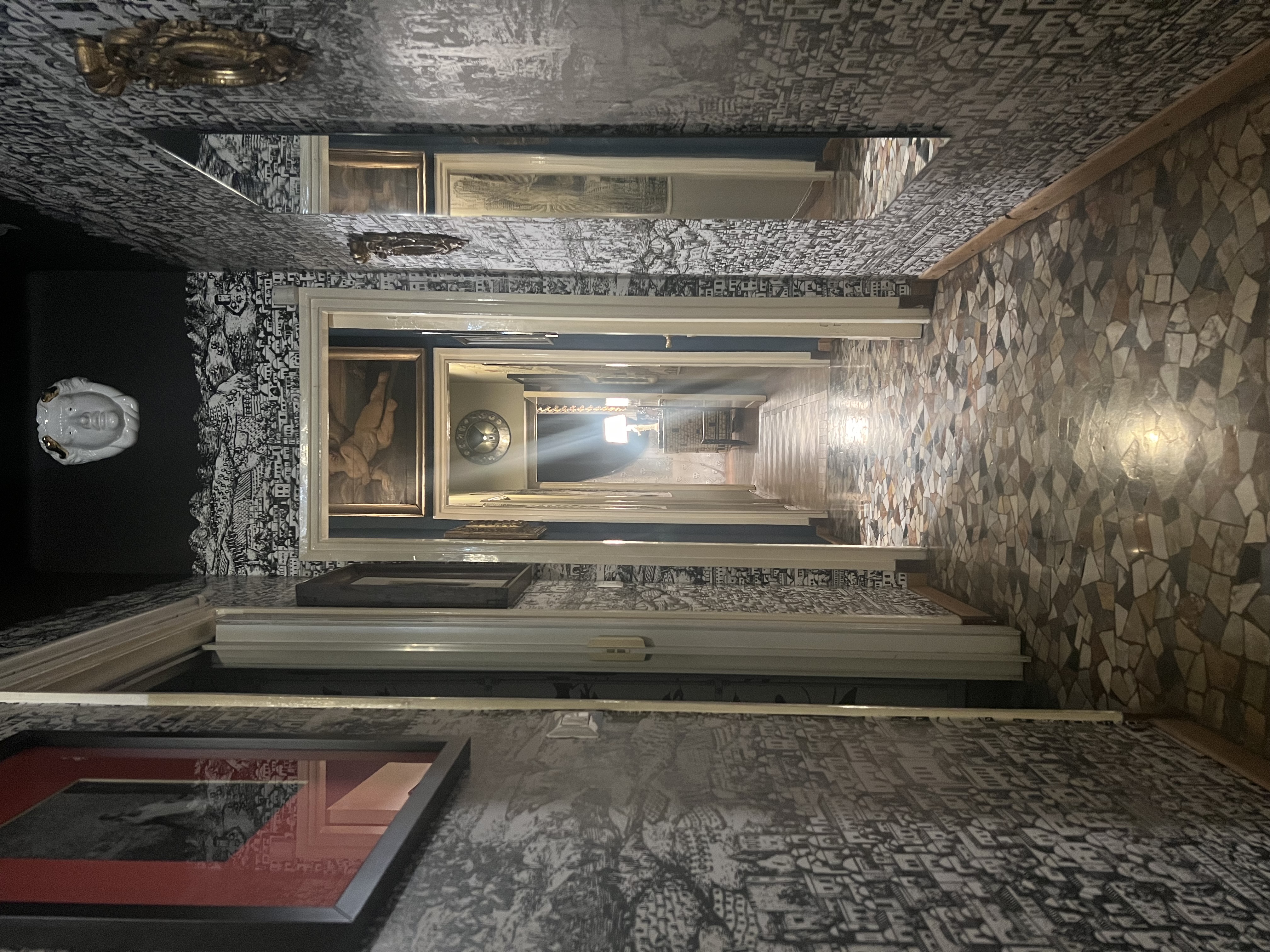
The hallway at the first floor. At its end, a bedroom (once that of Barnaba’s parents). The corridor is covered with Fornasetti custom-made wallpaper “Gerusalemme” (Jerusalem). On the top of the door the wall vase “Medusa” by Piero Fornasetti made in the ‘70s.
W*: What role does humour play in your work?
BF: Humour has always had a playful and subversive role in Fornasetti. Sometimes I would like to be more provocative, but the dynamics of the market do not allow me such freedom, and by adapting to them I live this contradiction typical of creative people.
W*: What do you do to relax? Do you have any rituals?
BF: Swimming is the most relaxing moment when I get the best ideas, but gardening too relaxes me a lot, without forgetting to pet my cats.
W*: What’s at the top of your to-do list?
BF: I would be interested in collaborating with architects, on external decorations in architecture.
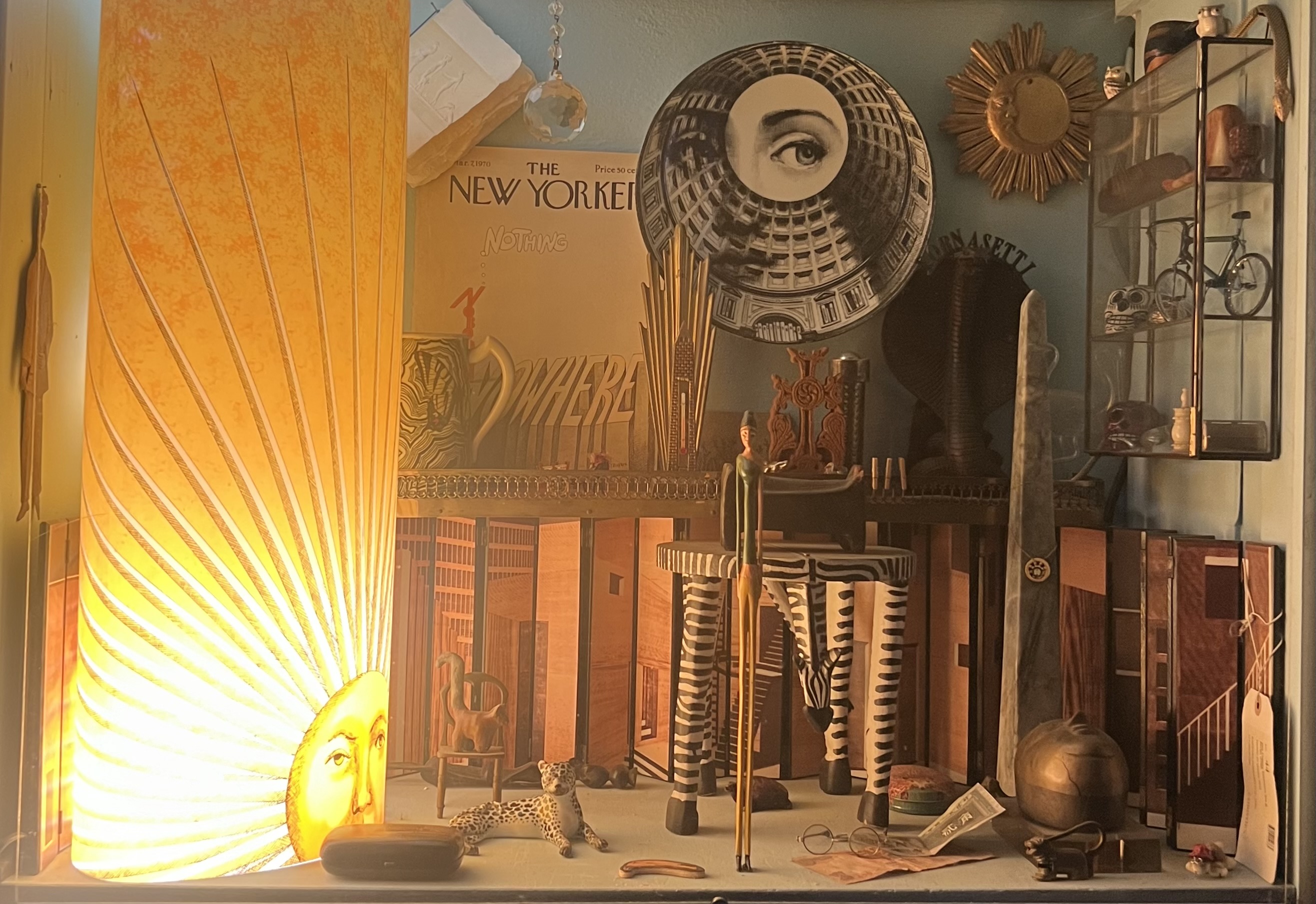
Barnaba created an installation with souvenirs and small Fornasetti objects, like the plate and the miniature screen of the “Stanza Metafisica” by Piero and Barnaba Fornasetti, inside a shelf of the library room. On the left: a Fornasetti lamp with the sun décor of the early ‘2000s.
W*: How do you switch off? Do you switch off?
BF: Yes, when I go to sleep at night listening to some music or making love.
W*: Ten years from now you’ll be…
BF: Happy as I am right now.
A version of this article appears in the May 2024 issue of Wallpaper* available in print, on the Wallpaper* app on Apple iOS, and to subscribers of Apple News +. Subscribe to Wallpaper* today
Maria Cristina Didero is an independent design curator, consultant and author, who has contributed to many publications over the years. Didero has consulted for companies such as Vitra, Fritz Hansen, Lexus, Fendi, Louis Vuitton, Valextra among others. Based in Milan, she works internationally, curating exhibitions for institutions: some of her most recent projects include Nendo: The Space in Between and The Conversation Show at the Holon Design Museum, Israel; FUN HOUSE by Snarkitecture at National Building Museum, Washington D.C.; SuperDesign a project about Italian radical design, NY; Vegan Design, or the Art of Reduction by Erez Nevi and The Fish and The Crowd by Carlo Massoud, Milan. In April 2022 she curated a Mathieu Lehanneur exhibition at the Triennale in Milan called The Inventory of Life, while in July she debuted a project at the MK&G in Hamburg titled Ask Me if I Believe in the Future, alongside a series of ongoing collaborations. She was appointed 2022 Curatorial Director of Design Miami/. She is currently preparing two projects for Milan Design Week 2023.
-
 Put these emerging artists on your radar
Put these emerging artists on your radarThis crop of six new talents is poised to shake up the art world. Get to know them now
By Tianna Williams
-
 Dining at Pyrá feels like a Mediterranean kiss on both cheeks
Dining at Pyrá feels like a Mediterranean kiss on both cheeksDesigned by House of Dré, this Lonsdale Road addition dishes up an enticing fusion of Greek and Spanish cooking
By Sofia de la Cruz
-
 Creased, crumpled: S/S 2025 menswear is about clothes that have ‘lived a life’
Creased, crumpled: S/S 2025 menswear is about clothes that have ‘lived a life’The S/S 2025 menswear collections see designers embrace the creased and the crumpled, conjuring a mood of laidback languor that ran through the season – captured here by photographer Steve Harnacke and stylist Nicola Neri for Wallpaper*
By Jack Moss